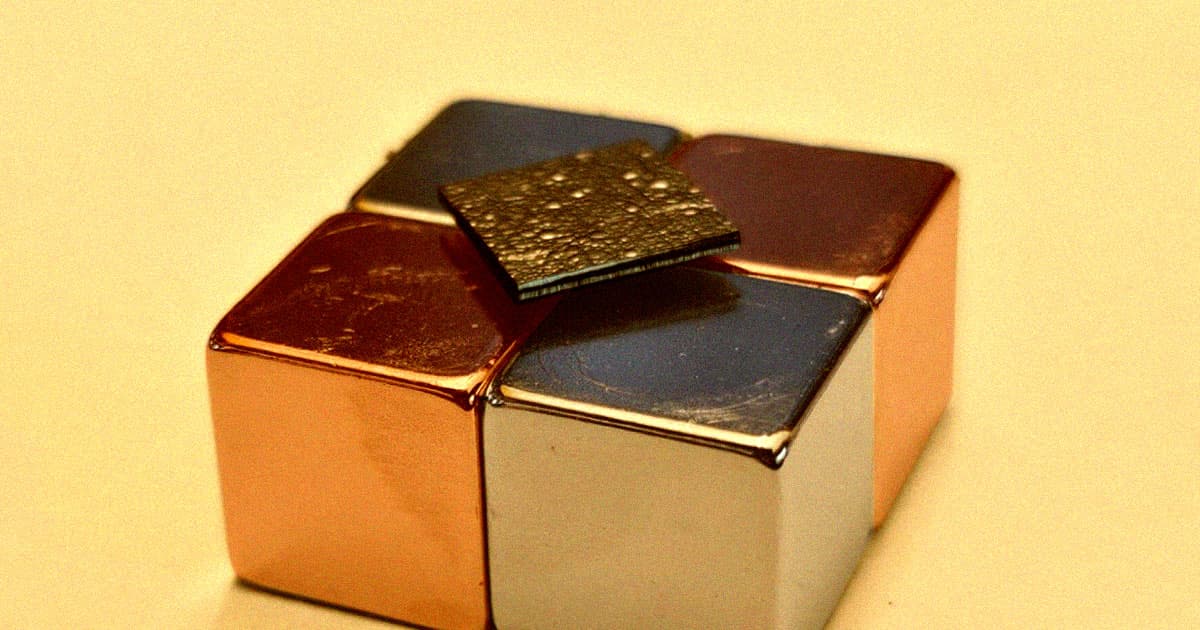This "gravity-free" graphite could be a game changer for science.
On a Float
A team of researchers at the Quantum Machines Unit at the Okinawa Institute of Science and Technology (OIST) in Japan have showed off a small piece of "gravity-free" graphite to levitate almost perfectly still above a grid of magnets.
Besides being a fascinating demonstration of magnetic levitation, the researchers' platform doesn't rely on any external power sources, as detailed in a new paper published in the journal Applied Physics Letters — which they say makes it perfectly suited for the development of a new generation of highly sensitive sensors for both scientific and consumer-level uses.
Gravity Train
The team created a floating platform consisting of chemically powder-coated graphite beads and a set of magnets arranged in a grid pattern below.
Their new system improves on previous iterations by foregoing the need for any external power. Magnetic levitation conventionally loses energy through kinetic energy, or "eddy damping."
Graphite is also an extremely powerful electrical conductor and loses energy by having electrical currents flow through it. That's why magnetic levitation has yet to emerge as a way to develop advanced sensors.
However, by minimizing the amount of movement of the small piece of graphite, the team is hoping to allow for the development of sensors that can detect changes in gravity down to the atomic level.
"Heat causes motion, but by continuously monitoring and providing real-time feedback in the form of corrective actions to the system, we can decrease this movement," said team lead and quantum machines researcher at OIST Jason Twamley in a statement. "The feedback adjusts the system's damping rate, which is how quickly it loses energy, so by actively controlling the damping, we reduce the system's kinetic energy, effectively cooling it down."
As a result, the platform could "outperform even the most sensitive atomic gravimeters developed to date," according to Twamley. "These are cutting-edge instruments that use the behavior of atoms to precisely measure gravity."
The team is now working on cutting out even more "external disturbances such as vibrations, magnetic fields, and electrical noise" to further improve their system.
For instance, such a technology could be used to improve mechanical oscillators, which are used to measure periodic movement in anything from clocks to radio circuits.
More on magnetic levitation: Claim of "Room-Temperature" Superconductor Is Tearing the Scientific World Apart
Share This Article
